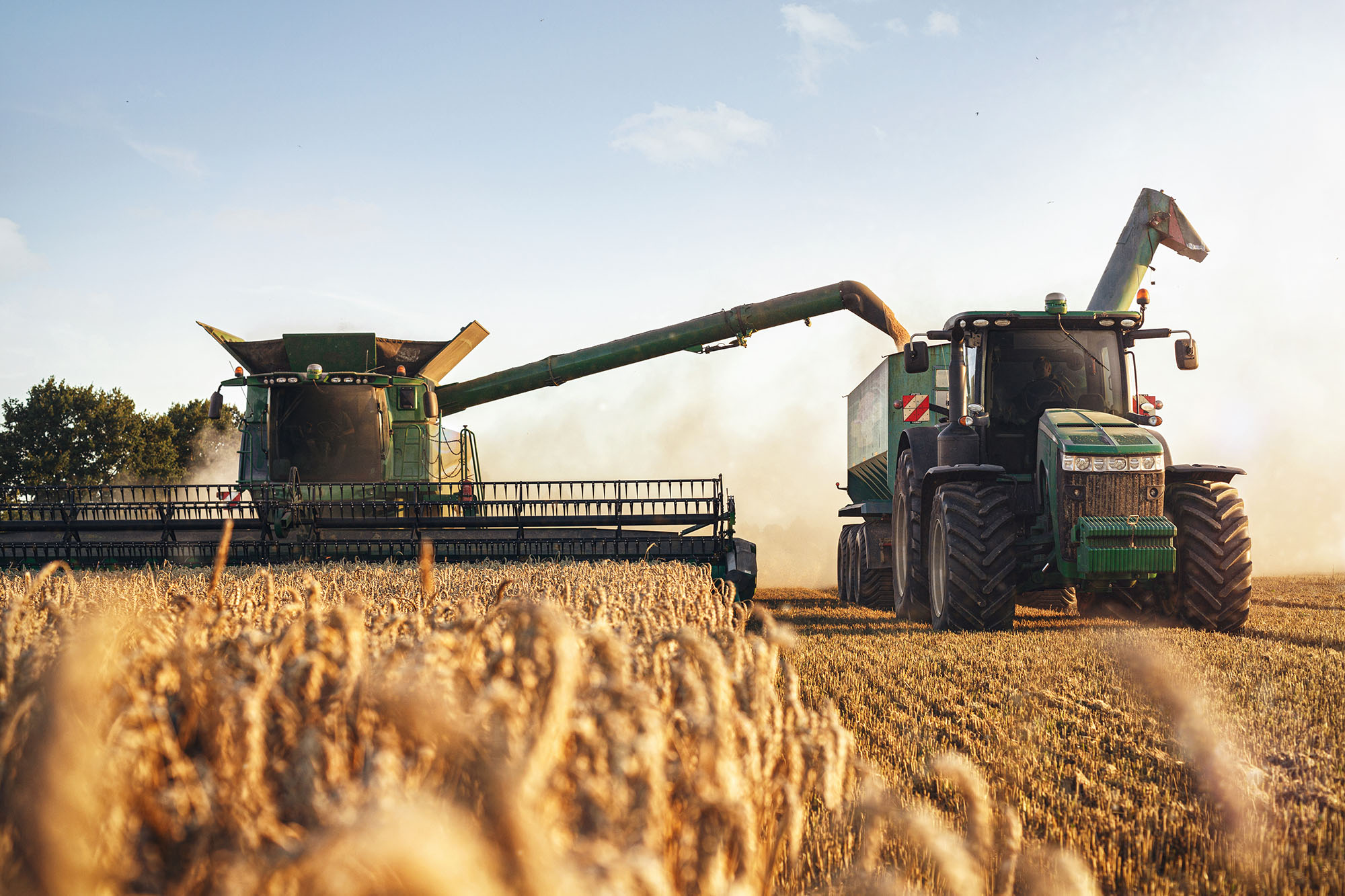Digging, moving, and hauling with compact equipment puts serious demands on an HVAC-R system....
A Cool Breeze on a Hard Day’s Work: The Evolution of HVAC in Tractors


Anyone who’s spent long days behind the wheel of a tractor knows that farming isn’t just tough—it’s one of the hardest jobs out there. It’s early mornings and late nights under the open sky, working through the heat with no A/C to escape it. Not too long ago that was the reality for farmers everywhere.
By the 1970s, manufacturers started putting A/C and heating systems into the cabs of tractors. Because when you’re out there hauling, plowing, and tending the land, a good tractor HVAC system isn’t just about comfort. It’s what keeps farmers productive so they can keep the world fed.
Let’s take a look at how heating, ventilation, and air conditioning (HVAC) for tractors has evolved and why it is more essential than ever for today’s farms.
How HVAC Changed the Game for Tractors
Agricultural machinery has come a long way. Once driven in the open air, tractors, combines, sprayers, and other farm vehicles now have enclosed cabs to protect operators from dust, extreme temperatures, and chemical exposure (think fertilizers and insecticides).
Naturally, tractor manufacturers started introducing HVAC systems for farm equipment, giving operators control over heating and A/C for comfort and safety. Today, most tractors, skid steers, side-by-sides, and front loaders come standard with built-in HVAC systems, making long hours in the field more manageable.
Challenges That Tractor HVAC Systems Must Overcome
Farming is tough on both operators and equipment. Scorching heat, dust storms, freezing rain, and rough terrain push HVAC systems for farm vehicles to the limit. That’s why they’re built to handle constant vibration, heavy use, and extreme conditions. Here’s how today’s systems keep up:
- Air quality and filtration: Farmers breathe in dust, pesticides, and debris daily. High-efficiency filtration systems keep tractor cab air conditioning clean, so operators stay safe.
- Cab pressurization: By keeping the cab under a slight over pressure, HVAC systems for tractors prevent contaminated air from seeping in.
- Durability from constant vibration: Farm HVAC units must withstand relentless shaking and jarring as tractors and equipment navigate uneven fields. HVAC components that are specially designed for tractors are reinforced to prevent failures caused by constant movement.
- Integrated monitoring: Many agricultural HVAC systems now come with real-time air quality and pressure monitoring, alerting operators if something needs adjusting.
Smarter, Tougher HVAC for Farm Equipment
The days of basic heating and cooling are long gone. Today’s tractor HVAC systems are smarter, tougher, and more efficient than ever, thanks to technological advancements that have improved reliability, reduced downtime, and helped farmers stay productive in any condition. Here’s how:
- IoT connectivity: Remote monitoring and diagnostics have led to the rise in predictive maintenance. This way, operators can follow a maintenance schedule and track A/C and heating performance to prevent failures before they happen.
- Data-driven controls: Advanced sensors optimize heating and cooling based on weather and operator preferences.
- Energy efficiency: New tractor HVAC units are designed to keep cabins cool and warm without draining too much power or fuel.
Which Brands Are Leading the Way?
Top manufacturers of farm equipment are building HVAC systems that are specifically designed to meet the tough demands of farm work. Some examples include:
- John Deere: One of the original names in farm machinery, John Deere has been in the tractor game for over a century. Its large-frame tractors feature premium HVAC systems, with many models offering automatic temperature control, pressurized cabs to reduce dust and allergens, and solar load sensors for consistent in-cab climate, even under intense sun.
- Case and New Holland: Both part of CNH Industrial, Case IH and New Holland are known for tractors with advanced HVAC systems. Their flagship models feature climate-controlled cabs, high-efficiency filtration, noise reduction, and ergonomic controls designed to reduce operator fatigue.
- Kubota: Known for its compact tractors, Kubota outfits its machines with high-performance air conditioning and heating for year-round operation.
- Polaris and Can-Am: Their side-by-sides and utility vehicles with enclosed cabs offer climate-control on some models.
- Bobcat and Wacker Neuson: Specializing in skid steers and compact loaders, these brands integrate rugged HVAC systems to handle extreme conditions.
- Manitou and MacDon: With a focus on telehandlers and harvesting equipment, they offer tractor HVAC solutions built for endurance.
The Future of Tractor HVAC Systems
So what’s next for tractor heating and air conditioning? As farming becomes more automated, HVAC technology is advancing, too.
- Autonomous farming: With self-driving tractors, HVAC systems will ensure proper airflow and temperature regulation, even without an operator.
- Better filtration: As air quality concerns grow, expect even more sophisticated filtration in tractor heating and cooling systems.
- Sustainability: Energy-efficient air conditioning for tractors will become standard, using eco-friendly refrigerants and smarter power management.
Farming isn’t for the faint of heart. It’s long hours, hard work, and unpredictable weather. But thanks to high-performance tractor A/C and heating systems, today’s farmers can stay focused on the job, from sunup to sundown.
Ready to dig in? Contact MCC today and let the climate control experts help with your next project.
March 24, 2025



